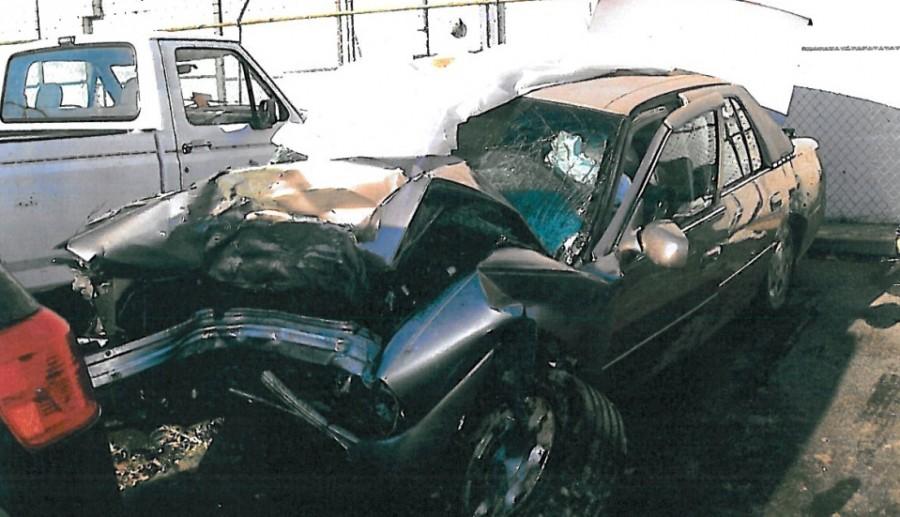About a month ago, junior Alex Cochran and a couple of his friends were hanging out in a local parking lot when things literally took a wrong turn. “A Canadian truck driver took too close a turn and picked us up and moved us a little bit. It ended up ripping off our front bumper, smashing our front lights and crushing our front tires,” said Cochran.
While Cochran and his friends were unharmed, some teen drivers aren’t as lucky. According to the Governors Highway Safety Association, for the first 6 months of 2012, the number of 16 and 17-year-old driver deaths increased by 19%. And according to the Center for Disease Control, teens are three times more likely to crash than any other age group.
Senior Cezanne Vahid, who was driving a recently-bought car, was at a red light with his dad in the passenger seat. “I remember once I stopped for the light, I was right about to reach for my phone to check a text and then ‘bam.’ I felt this violent and forceful jolt pushing the car into the intersection,” said Vahid.
Vahid’s father injured his back in the accident and was taken to the hospital. The car was completely totaled.
“In total, it was about $15,000 in damage for both my dad’s back and the car,” said Vahid. The driver who rear-ended Vahid paid for the car’s expenses.
Although Vahid and his father were safe, Vahid recalls his emotions at the time of the crash. “During the crash I was in a sort of daze. I couldn’t really believe what happened and was a little upset since I just recently got the car,” he said.
“In fact, I remember as I exited the vehicle I was so visibly shaken by the event that a nice lady who witnessed the accident came and gave me a hug.”
Distractions like texts, incoming calls, food and even sleep deprivation serve to put even the most avid drivers at high risk. According to DoSomething.org, using a cellphone increases the likelihood of being involved in a car accident by 200%, and more than 40% of all teen auto crashes occur between 9 p.m. and 6 a.m.
On Nov. 13, 2012, former Langley student Shan Jois met both of those statistics head on. After attending a concert in Washington D.C., Jois was driving home around 4 am.
Because he wasn’t familiar with the area, Jois was using his cellphone as a GPS. After a quick glance at his phone, he looked back up again to see a red light and slammed on his brakes as fast as he could. But he wasn’t fast enough.
Jois hit the car in front of him. Although he was travelling at 35 mph, Jois suffered a cut lip and a nosebleed, and his glasses were knocked off of his face out the window. The car in front of him lurched forward 30 feet and Jois’s car was totalled.
“I called my parents and told them what happened. They drove into D.C. anound me and my car around 6 a.m. The scariest part of the crash was the airbags. You forget that they’re there, and they hurt,” said Jois.
Driver’s Education teacher Ms. Susan Shifflett offers her advice to teens behind the wheel so that no one ends up in a situation similar to Jois.
“Teens should have hundreds of hours driving with their parents, not just 45. Practice, practice, practice and don’t allow yourself to be distracted,” said Ms. Shifflett.


